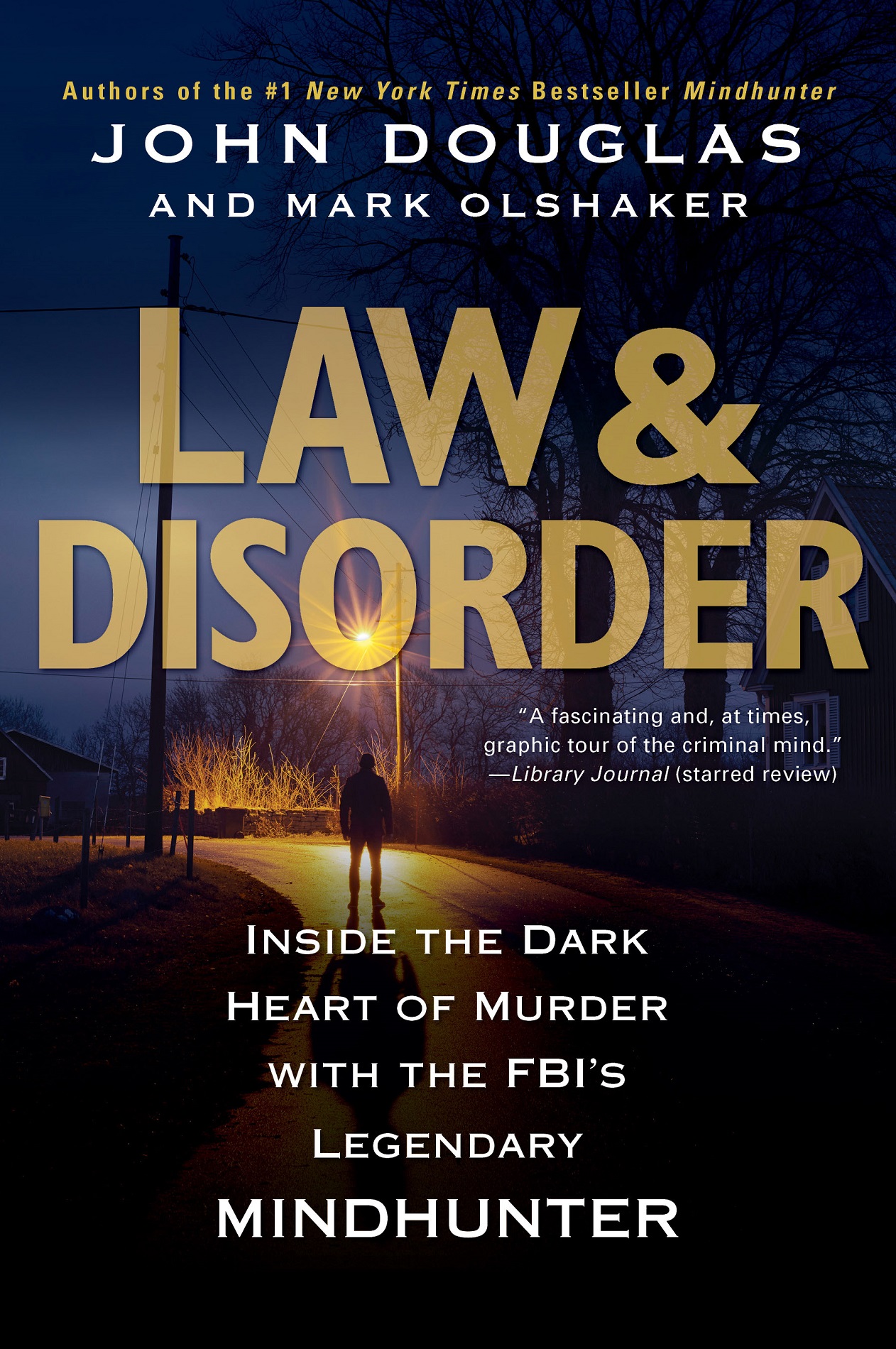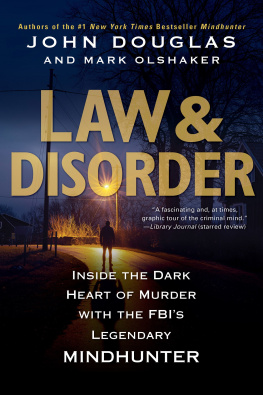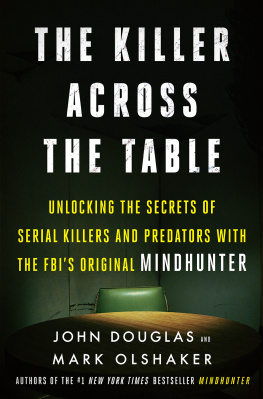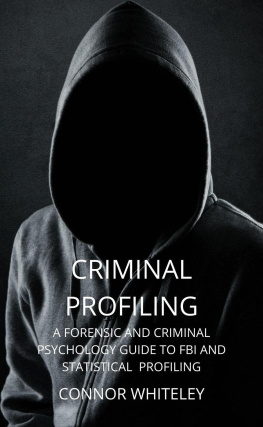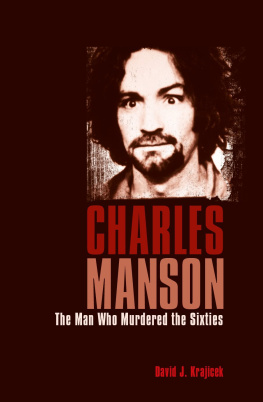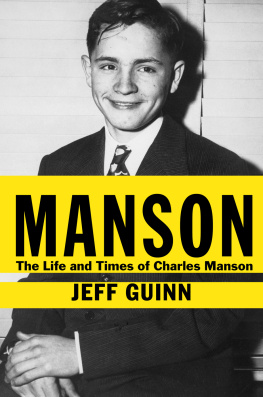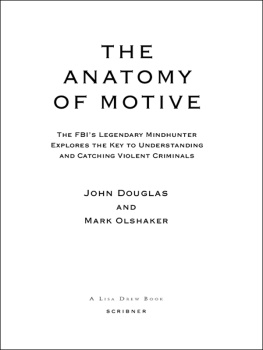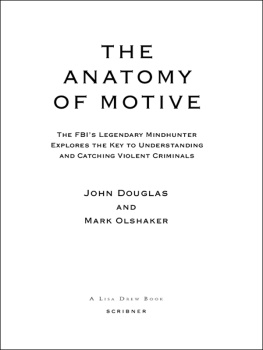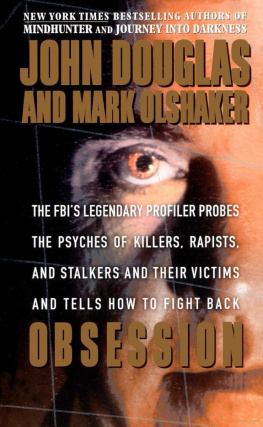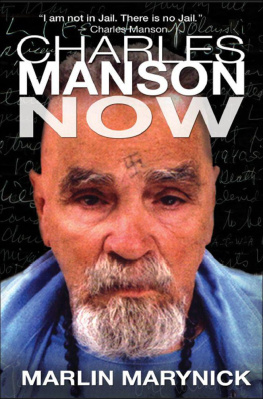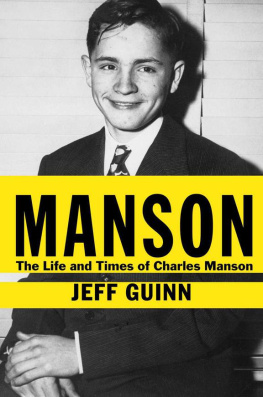CITADEL PRESS BOOKS are published by
Kensington Publishing Corp.
119 West 40th Street
New York, NY 10018
Copyright 2013 Mindhunters, Inc.
All rights reserved. No part of this book may be reproduced in any form or by any means without the prior written consent of the publisher, excepting brief quotes used in reviews.
All Kensington titles, imprints, and distributed lines are available at special quantity discounts for bulk purchases for sales promotions, premiums, fund-raising, educational, or institutional use.
Special book excerpts or customized printings can also be created to fit specific needs. For details, write or phone the office of the Kensington sales manager: Kensington Publishing Corp., 119 West 40th Street, New York, NY 10018, attn: Sales Department; phone 1-800-221-2647.
CITADEL PRESS and the Citadel logo are Reg. U.S. Pat. & TM Off.
ISBN: 978-0-8065-4183-9
First Kensington hardcover printing: March 2013
First Citadel trade paperback printing (updated edition): January 2022
10 9 8 7 6 5 4 3 2 1
Printed in the United States of America
Pinnacle electronic edition:
ISBN: 978-0-7860-3431-4 (e-book)
P ROLOGUE
W ITCH -H UNTING
Salem Village and Town, Massachusetts Bay ColonyJune 1692
S he was different, an outsider. And even though she lived in their community, she was not really one of them. The perfect profile of someone to fear.
She always wore black, and often strange outfits, hardly in keeping with the Puritan and proper way of life. So when Sir William Phipsnewly appointed governor of the royal colony of Massachusetts Bayestablished a Court of Oyer and Terminer (a tradition of British law from the Anglo-French, to hear and determine), it was probably not surprising that sixty-year-old Bridget Bishop should be the first one brought before the bar of justice.
It had been more than five months since January 20, when the Reverend Samuel Parriss nine-year-old daughter, Betty, and his eleven-year-old niece, Abigail Williams, had been first afflicted at the parsonage in Salem Village. They were seized with spontaneous fits that included the sensation of pinches and sharp needle pricks, tongues drawn from their throats, loud sudden outcries, as well as severe pains of the neck and back. Dr. William Griggs examined them thoroughly, but he could find no cause in nature for the girls terrifying symptoms.
The afflictions quickly spread to Ann Putnam, their twelve-year-old friend, and then to Mary Walcott, Anns seventeen-year-old friend, and Mercy Lewis, the Putnams seventeen-year-old servant. Soon ten girls and young women up to the age of twenty were behaving the same way.
The Harvard-educated Reverend Parris and other prominent village elders drew the most logical conclusion: The Devil hath been raised among us, and witchcraft had invaded their well-ordered community. Cotton Mather, the most learned and influential minister in the colonyson of the Reverend Increase Mather, president of Harvardhad warned of this threat in his landmark treatise, Memorable Providences, and had himself examined bewitched children in Boston.
Various scientific methods were employed to confirm the doctors diagnosis and the ministers conviction. Reverend Parriss neighbor Mary Sibley, whose niece Mary Walcott was one of the afflicted girls, prevailed upon Tituba, Parriss slave, and Titubas husband, John Indian, to bake a witch cake. This well-established method was first used in England. Instead of milk, urine from the girls was mixed with rye meal. When it came out of the oven and cooled, it was fed to a dog. If the dog displayed similar symptoms to the human victims, it was determined they were, indeed, bewitched. Once a suspected witch was identified, the touch test, based on the Cartesian Doctrine of Effluvia, could be used. If the suspect touched a victim during a fit and it stopped, that proved it was the suspect who had caused the affliction.
Near the end of February, some of the girls called out the names of three women who were tormenting them. The first was Tituba, who had entertained the girls with her native stories, spells and incantations. The second was Sarah Good, an old homeless beggar who went door-to-door and was known to mutter at those who would not give her alms. The third was Sarah Osborne, a widow who had married an indentured servant, much to the disapproval of town worthies, and who seldom went to church. It was not surprising that these marginal members of the community would consort with the Devil. Warrants were sworn out and the women were arrested on suspicion of witchcraft. Now investigators had solid information and suspects to work with.
On March 1, magistrates John Hathorne and Jonathan Corwin commenced hearings in the Salem Village meetinghouse, converted for the purpose into a makeshift courtroom. The girls all confirmed that Sarah Goods spectral shape had attacked them.
Under rigorous questioning, Goodies (for Goodwives) Good and Osborne denied being witches. Tituba, in an apparent effort to save herself, confessed to having been enticed by the Devil, but she claimed she was no longer working for him. Following a similar tactic, Good claimed it was actually Osborne who was tormenting the children. But the astute investigators realized that if she knew this, it must mean that she was a witch, too.
The following week, the three suspects were sent to jail in Boston, twenty miles away, and the hearings continued. Each person the girls accused was brought in for examination and most were sent to jail. Soon it was no longer just the marginal characters. Before the month was out, regular churchgoers had been called out, such as Rebecca Nurse.
And still the girls were acting up, meaning the Devil had taken firm hold in and around Salem. The situation had reached crisis proportions. It was as if a deadly disease was rapidly spreading and anyone could be a carrier. No one was beyond suspicion.
Martha Corey voiced public skepticism about the girls credibility. Soon the girls saw her shape sitting on a beam above them in church, suckling a yellow bird from her hand.
One of the girls, Mary Warren, named her mistress, Elizabeth Proctor. Elizabeths husband, John, was a prominent and upstanding farmer. Like Martha Corey, he did not believe in witchcraft. During Elizabeths hearing, the girls called out his name; under repeated questioning, Mary asserted he was a wizard.
Outside the meetinghouse, Mary reportedly admitted that John Proctor was not a wizard and suggested that the girls actions were a sport. Hearing this, some of the other girls accused her of being a witch. She was arrested and, under repeated formal questioning, declared that the Proctors were, in fact, wizard and witch.
